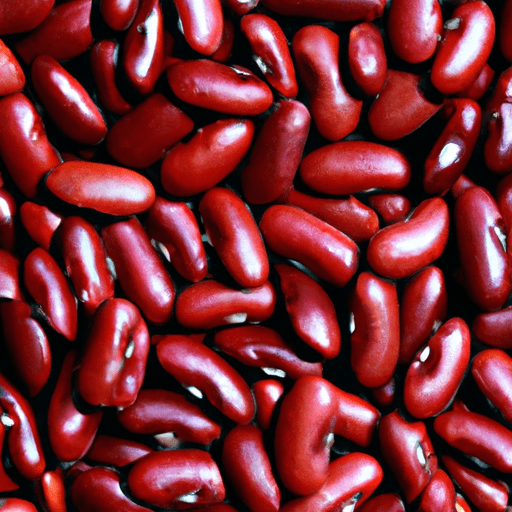All About Red Beans: A Versatile and Nutritious Ingredient
Red beans are a staple in many cuisines around the world. They are not just delicious, but also offer a range of health benefits. In this blog post, we will explore the wonderful world of red beans, including their taste, common uses in cooking, nutritional value, and some interesting history. So, let’s dive in!
Taste and Texture
Red beans have a delicate nutty flavor and a creamy texture when cooked. They are incredibly versatile and can easily absorb and enhance the flavors of the ingredients they are cooked with. Whether you simmer them in a stew, mash them into a dip, or toss them into a salad, red beans add a hearty and earthy taste to any dish.
Common Uses in Cooking
Red beans are widely used in various cuisines across the globe. In the southern United States, they are a vital ingredient in the famous Louisiana Creole dish, Red Beans and Rice. This slow-cooked comfort food is often prepared with smoked pork or sausage, creating a rich and flavorful combination. Red beans are also a key ingredient in Mexican refried beans, giving them their vibrant color and creamy texture.
In Caribbean cuisine, red beans are frequently used in stews, curries, and soups. In Brazil, they are a primary component of feijoada, a flavorful black bean stew traditionally made with red beans. Red beans are popular in Chinese cuisine too, where they are added to stir-fries and noodle dishes.
These versatile legumes can be used in a variety of vegetarian and vegan recipes as well. From red bean burgers to bean salads and dips, their possibilities are endless.
Nutritional Value
Red beans are not only delicious but also packed with essential nutrients. They are an excellent source of plant-based protein, making them a great choice for vegans and vegetarians. Additionally, red beans are rich in dietary fiber, which aids in digestion and contributes to heart health.
They are also a good source of iron, magnesium, and potassium. Iron is crucial for maintaining healthy blood cells, while magnesium plays a vital role in bone health and energy production. Potassium helps regulate blood pressure and supports proper muscle and nerve function.
Including red beans in your diet can provide a healthy dose of vitamins and minerals, all while adding flavor and texture to your meals.
History and Fun Facts
Red beans have a fascinating history that spans centuries. They are believed to have originated in South America and were later introduced to Europe and Africa. The cultivation of red beans spread across the globe during the era of Columbian exchange, when agricultural products were exchanged between the eastern and western hemispheres.
In certain cultures, red beans hold symbolic significance. For instance, in China and many other Asian countries, red beans are associated with good luck and prosperity. They are often used in festive dishes and desserts during Chinese New Year celebrations.
Fun fact: In some regions of the United States, Monday has traditionally been designated as “Red Beans and Rice” day, originating from the practice of slow-cooking red beans on Sundays while attending church services. This tradition continues today in many households and restaurants, keeping the love for red beans alive.
Conclusion
Red beans are a versatile and nutritious ingredient that adds flavor, texture, and richness to a wide variety of dishes. Whether you enjoy them in a classic Creole dish, a spicy Mexican bean dip, or a hearty Brazilian stew, red beans are sure to delight your taste buds while providing essential nutrients for a well-balanced diet. So, next time you’re looking to enhance your culinary creations, don’t forget to reach for a bag of red beans!
Red Beans
Origin: Red beans, also known as kidney beans, have their origins in Mexico and Central America, where they were cultivated as early as 7000 BC. They were later introduced to Europe by Spanish explorers and quickly spread across the globe.
Common Uses: Red beans are a staple in many cuisines around the world. They are often used in dishes such as chili con carne, rajma (Indian kidney bean curry), feijoada (Brazilian black bean stew), and red beans and rice (a traditional dish from the Southern United States).
Nutritional Benefits: Red beans are highly nutritious and offer several health benefits. They are an excellent source of plant-based protein, dietary fiber, and complex carbohydrates. They also contain significant amounts of folate, potassium, iron, and various B vitamins. Red beans are low in fat and cholesterol-free.
Unique Properties: Red beans get their name from their distinct kidney shape. They have a smooth texture and a slightly nutty flavor. Like other legumes, they are known for their ability to absorb the flavors of the ingredients they are cooked with. They are also used as a natural dye in some traditional cuisines.
Historical Significance: Red beans hold cultural and historical significance in various societies. In many countries, they are associated with good luck and prosperity. For example, in the Southern United States, red beans and rice are traditionally eaten on Mondays for good luck throughout the week. In some Latin American countries, they are a popular ingredient in celebratory dishes associated with festivals and holidays.
Feel free to ask if you have any more questions!




Use the share button below if you liked it.
It makes me smile, when I see it.